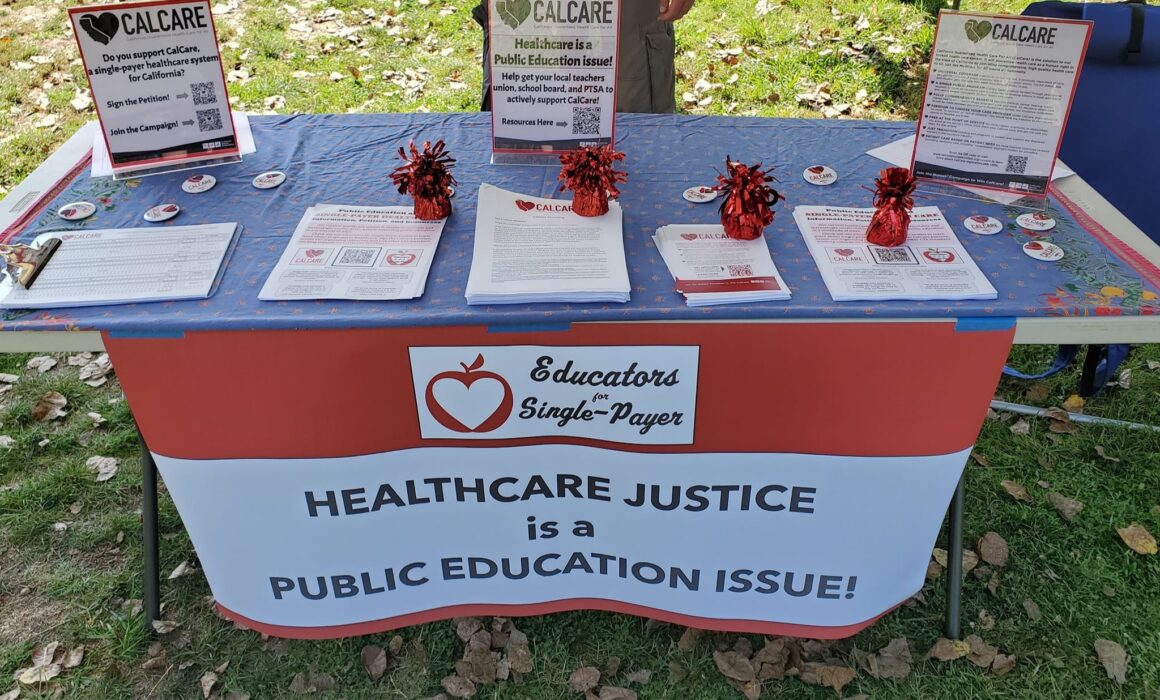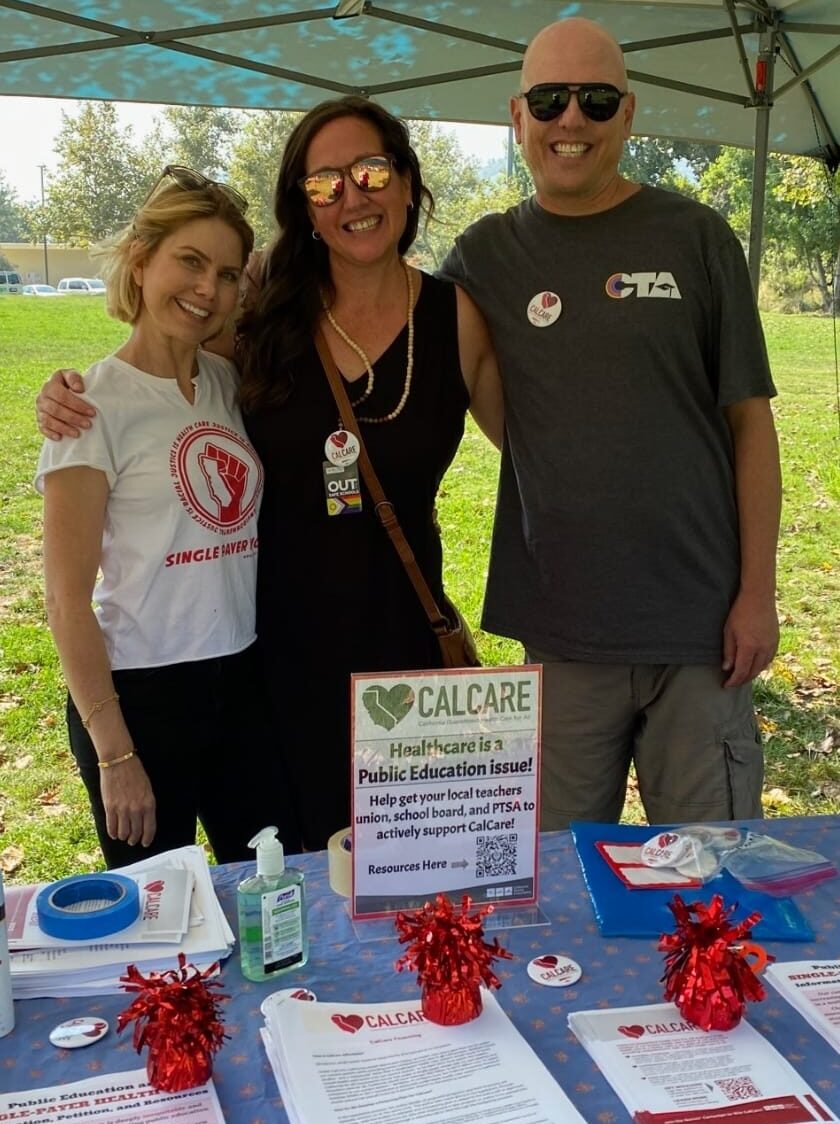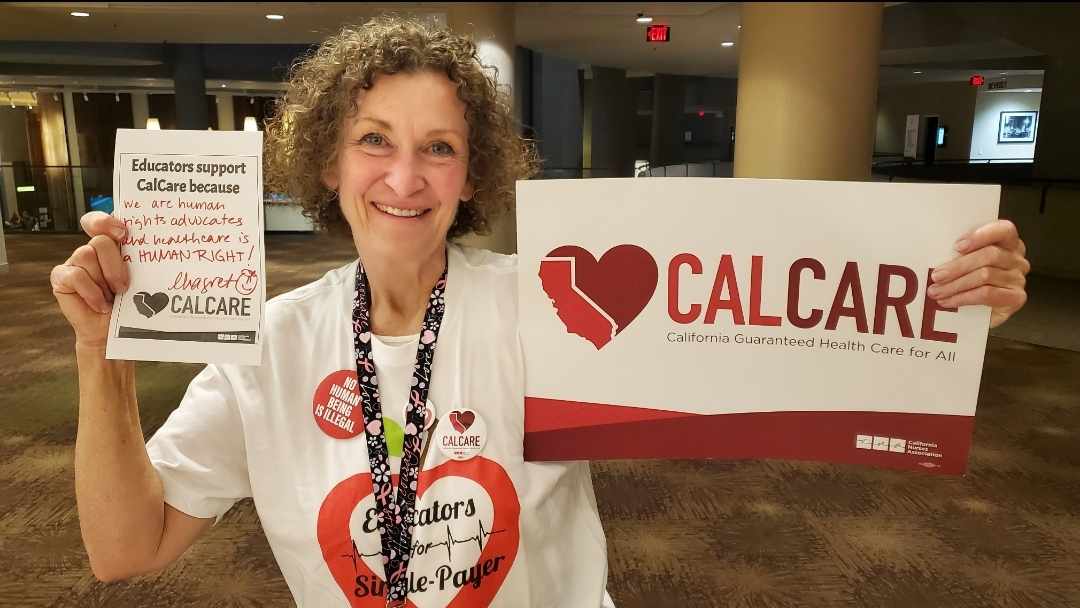
It’s estimated that more than 3.2 million Californians have no health care insurance, and millions more with coverage delay or cannot access needed health care services, including medications, due to cost. That number has grown in the wake of the Covid-19 pandemic, as many workers lost their employer-based coverage or have been unable to afford the cost of health care.
This dire situation affects all of us – not only those without coverage or enough funds, but our society as a whole, which must contend with the sick and suffering, a negative impact on our workforce and communities, and ever-rising costs to “fix” the problems. (Even people with insurance are painfully familiar with increasing deductibles and out-of-pocket costs, as well as insurers’ routine denial of care.)
In recent years, advocates and legislators have pointed to a single-payer health care system as a solution. But what is it, exactly?
The goal of single-payer health care is universal, guaranteed health care for all. It is based on the ideal that health care is a human right – an acknowledgement that public health and well-being are moral obligations in a humane society.
With single-payer health care, all residents are covered equally. Services are paid for and overseen by a government or public agency through federal funding and taxes. This is sometimes referred to as “Medicare for all.”
Single-payer benefits students, schools, workers

Erika Feresten, left, and CTA members Shelly Ehrke and Mark Norberg are part of the group Educators for Single-Payer. They support CalCare, a bill that would enact a single-payer health care coverage system for California residents.
In recent years educators and unionists, including CTA members, have become vocal supporters of single-payer health care. Shelly Ehrke, a member of Santa Monica-Malibu Classroom Teachers Association, is part of Educators for Single-Payer, a group of California educators who have been meeting regularly on the subject.
“More and more educators across California are strongly supporting and organizing for single-payer healthcare because we see first-hand how the inequities and skyrocketing costs of our current system are impacting our schools, students, and members,” Ehrke says.
These impacts are pernicious, she says.
“Ever-increasing insurance premiums are siphoning billions of public education dollars away from our schools simply for insurance company profit; millions of students lack the consistent, quality healthcare that would set them up for success in school; our bargaining teams spend an extraordinary amount of time and resources negotiating healthcare that could never be as comprehensive, consistent, or cost-effective as single-payer instead of being able to dedicate that time to other education-related issues; and despite the incredible work of our bargaining teams, members still deal with denials, deductibles, co-pays, network restrictions, gaps in coverage and surprise bills.”
Educators for Single-Payer and other advocates use recent research studies and surveys to identify several primary reasons a single-payer health care system benefits public education and workers. Among them:
- Students with consistent healthcare have better test scores, attendance, focus, graduation rates, social-emotional well-being, and long-term educational attainment.
- Implementing single-payer could save California schools over $5 billion, cutting district healthcare expenditures by half or more.
- The savings from a single-payer policy would allow school districts to invest in class size reduction, better salaries, more staffing, mental health supports, facilities, student resources, and more.
- Single-payer would take healthcare off the negotiating table, freeing up our bargaining teams to focus on other important issues in education.
- No union-negotiated health benefits will ever be as comprehensive, consistent, or cost-effective as single-payer.

CTA member Magret Nunes supports single-payer health care.

CTA member Margie Keh Bradley with Chris Stockton.
Coverage for all
Universal, guaranteed health care for all aligns with an equitable and socially just society. For Educators for Single-Payer, it also makes sense.
“With a single-payer system, every single person in California would have comprehensive healthcare, with any provider they choose, from the cradle to the grave – expanded to include dental, vision, long-term care, home care, prescriptions, medical devices, and more – all at a fraction of what the state, our districts, and individuals spend now,” Ehrke says.
“That’s why Educators for Single-Payer strongly believe healthcare justice is a public education issue worth fighting for.”

CTA State Council Single-Payer Forum, March 2023. Left to right: Shelly Ehrke, Ever Flores, Anthony Arinwine, Radha Bala, Tina Fredericks, Mari Lopez (CNA), Mark Norberg, Emily Rogers.
The Discussion 0 comments Post a Comment